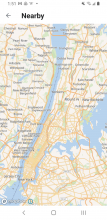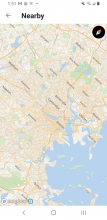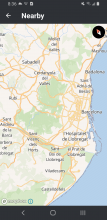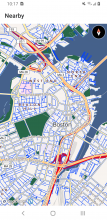Background
Android had Nearby/Places in the app several years ago. It was removed due to performance challenges (details can be found here). It is a possibility that open source maps have improved since the feature has been removed OR the tolerance towards Google Maps may have change (more context can be found here).
Task
- Reach out to @kchapman for guidance on open source maps to use
- Investigate using Openstreetmaps and putting restrictions on scroll
- Touch base with Legal about using Google Maps and Opt-Out






